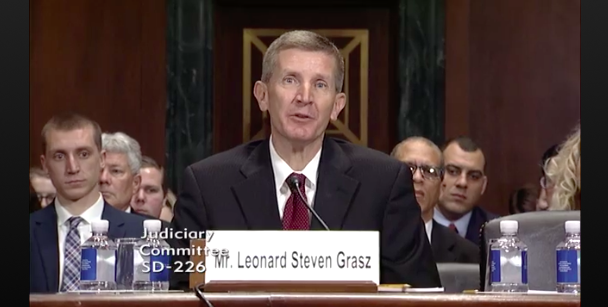Abortion rights, women of color, and LGBTQI+ people are under attack. Pledge to join us in fighting for gender justice.
Reed v. Reed at 40: A Landmark Decision
In 1971, the United States Supreme Court invalidated an Idaho law that required the selection of a man over a woman to serve as administrator of an estate when both were equally qualified. The landmark Reed v. Reed decision, 404 U.S. 71 (1971), marked the first time in history that the Court applied the Equal Protection Clause of the Fourteenth Amendment to strike down a law that discriminated against women.
Background of the Reed v. Reed Case
The woman who challenged Idaho’s discriminatory statute was Sally Reed, a single mother who earned a living by caring for disabled people in her home. The case began when her teenage son Skip died tragically. According to Sally, her ex-husband, Cecil Reed, was an abusive husband and father who deserted the family when their son was only three or four years old. After their divorce, Sally raised Skip during his “tender years,” but Cecil was awarded partial custody of Skip when he reached his teens. During one of his visits, Skip was found dead in his father’s basement, having apparently shot himself with his father’s rifle. Skip’s death was determined a suicide, but Sally was suspicious because Cecil had taken out a life insurance policy on the boy. Because Skip had died without a will, Sally filed a petition to be appointed administrator of his estate, which consisted of only $495 and a few personal belongings. Cecil Reed put in a rival application.
At the time, Idaho law required that “males must be preferred to females” when more than one person was equally qualified to administer an estate. Therefore, the Idaho probate judge automatically granted Cecil Reed’s application without allowing Sally a hearing to prove that she was better qualified. Sally immediately asked her lawyer to appeal, but he refused, telling her that she had no chance of winning. After she was turned down by sixteen other lawyers, an attorney named Allen Derr agreed to take her case. He warned that she would probably lose, but believed the case presented a viable constitutional issue.
Sally Reed fought the case through every level of the courts, finally asking the U.S. Supreme Court to do something it had never done before: declare a law that discriminates on the basis of sex to be unconstitutional. This time, she and Derr were joined by the American Civil Liberties Union. Ruth Bader Ginsburg, who shortly thereafter became director of the ACLU Women’s Rights Project, was the principal author of the brief.
The Law at the Time
In 1970, the Court had only two tests for analyzing an equal protection claim: “rational basis” and “strict scrutiny.” Under the first, the law in question only had to be “rationally related to a reasonable state interest.” Laws, including those that relied on gender-based classifications, were virtually always upheld under this test. On the other hand, laws that discriminated against what the Court considered a “suspect class,” like racial minorities, were subject to “strict scrutiny,” meaning that they were upheld only if they were necessary to serving a compelling state interest. Such laws virtually always failed the more difficult test. Sally Reed’s brief argued that laws that discriminated on the basis of sex, like those that categorized based on race, should be subject to strict judicial scrutiny, because sex, like race, was an inborn characteristic that individuals were powerless to change and because, women, like racial minorities, were historically discriminated against under the law, including by limitation on their ability to own property, serve on juries, hold certain jobs, and, of course, vote. As a result, women were underrepresented politically, and lacked the power to change discriminatory laws through the legislative process.
The Significance of Reed v. Reed
A unanimous Supreme Court held that the preferences established in favor of males by the Idaho code were “the very kind of arbitrary legislative choice forbidden by the Equal Protection Clause of the Fourteenth Amendment.” The decision did not address whether discrimination based on sex was entitled to strict judicial scrutiny. Five years later, in Craig v. Boren, 429 U.S. 190 (1976), the Court’s established a new standard for sex discrimination. Under this “intermediate” or “heightened scrutiny” standard, discriminatory laws and policies must be supported by an “exceedingly persuasive justification” that is substantially related to an important government objective and cannot be based on stereotypes about gender roles.
Thanks to Sally Reed, the door was opened for other women and men to successfully challenge discriminatory laws under the Equal Protection Clause, and government laws and practices such as providing widows, but not widowers, survivor’s benefits based on their spouses’ contributions to Social Security; granting men control over marital property; providing welfare benefits to a family when a father, but not a mother, was unemployed; and excluding women from public military colleges were struck down.
Learn more about Reed v. Reed and the continuing importance of constitutional protections to women by registering for the live webcast of “Reed v. Reed at 40: Equal Protection and Women’s Rights,” a panel featuring special guest Justice Ruth Bader Ginsburg that will be held on Thursday, November 17, 2011, from 1-2:30 pm Eastern.
To participate in the conversation about the panel via Twitter, please use #reedvreed. If you would like to submit a question for the panel or Justice Ginsburg, please do so via our Facebook page.





